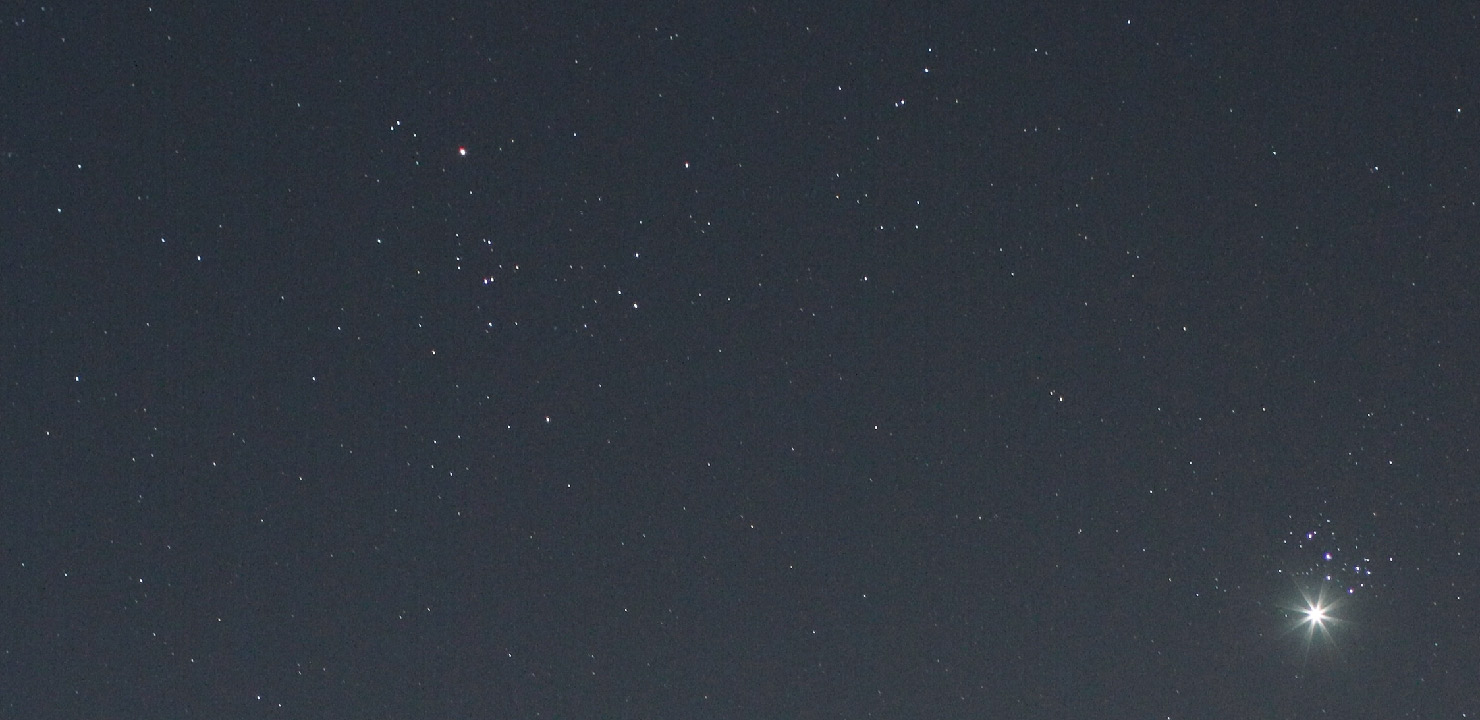
Supernova Deferred (for now), Easter, and a Meteor Shower
April 2020 :
As 2019 came to a close, the news media sensationalized a story about Orion’s bright star Betelgeuse. The headlines were certainly designed to get one’s attention. Betelgeuse was about to go supernova. However, the star’s behavior was really old news that was recently enhanced by new observational data. You see, Betelgeuse is a red super giant star (20 times more massive than our Sun and approximately 1000 times larger) that is indeed nearing the end of its life cycle. And with a star this massive, the result will someday be a supernova event.
Betelgeuse is a known variable star, which pulsates back and forth about one full magnitude (brightness scale) in a 425-day period. What happened more recently is that the star dimmed a little more than usual, by about .2 of a magnitude. An imaging technique using radio waves revealed Betelgeuse appeared to be lopsided, but this discovery turned out to be a huge dust cloud blocking some of the star’s light from reaching us. In fact, Betelgeuse has shed off great shells of its outer surface several times in the past, typical activity for these stars as they “burn” through their supply of nuclear fuel. Speculation arose that Betelgeuse’s grand finale was soon at hand.
However, every article I read succinctly stated the event could happen soon, or 100,000 years from now. While it is inevitable that Betelgeuse will go supernova in the future, we needn’t worry. Fortunately, at its distance of about 700 light years from the Earth, we will not suffer from any hard radiation effects. The supernova will be at least as bright as a Full Moon and will be visible in broad daylight. About a day before we see the visible light from the supernova event our Earth will be bombarded by a harmless hail of neutrinos and gamma rays. That onslaught will be our advance warning system that Betelgeuse the star has met its demise.

Just as I began to write about Betelgeuse’s potential imminent demise, new data revealed that Betelgeuse began to brighten once again during mid-to-late February (much like it has in the past). Astronomers will certainly keep monitoring Betelgeuse with their instruments in the hope of capturing the death of a star. If it happens within our lifetime, I hope it occurs when the constellation of Orion is above our horizon. The sight will be spectacular.
Easter Observance Determination
Many religious celebrations are determined by astronomical circumstances. Easter is no exception. But because our secular calendar is not in sync with the motion of the heavens, Easter can occur as early as March 22 or as late as April 25. The general rule is: Easter will fall on the first Sunday after the Full Moon on or next after the vernal equinox (spring—March 19, 20 or 21). However, if the Full Moon occurs on a Sunday, Easter is celebrated on the following Sunday. This scenario happened in 2001.
However, there is a caveat to that rule that I only learned about back in 2018. Because the date of the vernal equinox does vary year-to-year, the determination for the Easter date depends on the “ecclesiastical approximation of March 21 for the vernal equinox” according to https://www.timeanddate.com. This stipulation holds true even if the vernal equinox falls on the 19th or 20th of March.
Therefore, for 2020, using March 21 as the date for the vernal equinox, the next Full Moon after March 21 will be on April 7 at 10:35 pm EDT (Eastern Daylight Time) this year. Therefore, Easter will be celebrated on the following Sunday, April 12.
April Lyrids Meteor Shower
It’s been a while since Mother Nature has afforded us a decent display of shooting stars. Clouds or bright moonlight have often conspired to prevent us from watching “burning rocks” falling from the sky. However, on the night of April 22-23, between midnight and dawn, the annual April Lyrids meteor shower will reach its peak of activity. The Lyrids are actually the oldest known shooting star display, having been observed by Chinese astronomers on March 16, 687 BCE. Being such an old display, the number of meteors populating this stream of particles has greatly diminished. However, with good sky conditions and no interfering moonlight, perhaps up to 20 meteors per hour can be counted from dark sky locations.

These swift and bright meteors disintegrate after hitting our atmosphere at a moderate speed of 29.8 miles per second. They often produce luminous trains of dust that can be observed for several seconds. The Moon will be new on the 23rd, so it will not interfere whatsoever with this year’s shooting star display.
The Lyrids appear to radiate outward from an area of sky on the Lyra-Hercules border near the bright star Vega, which will be about 45 degrees (halfway between the horizon and zenith) above the eastern horizon at midnight and well placed for observing. Let your eyes roam the heavens while facing this general direction. Remember, even though you can trace the dust train left by a Lyrid meteor back to the radiant point, members of this shower can appear anywhere in the sky. The Lyrids are a fairly narrow stream of particles, so don’t expect many to be seen before or after peak night. It is produced by dust particles left behind by comet C/1861 G1 Thatcher,
Keep your eyes to the skies!
Venus meets the Pleiades in early April, as seen in this image from April 2012 by Jim Hendrickson.



